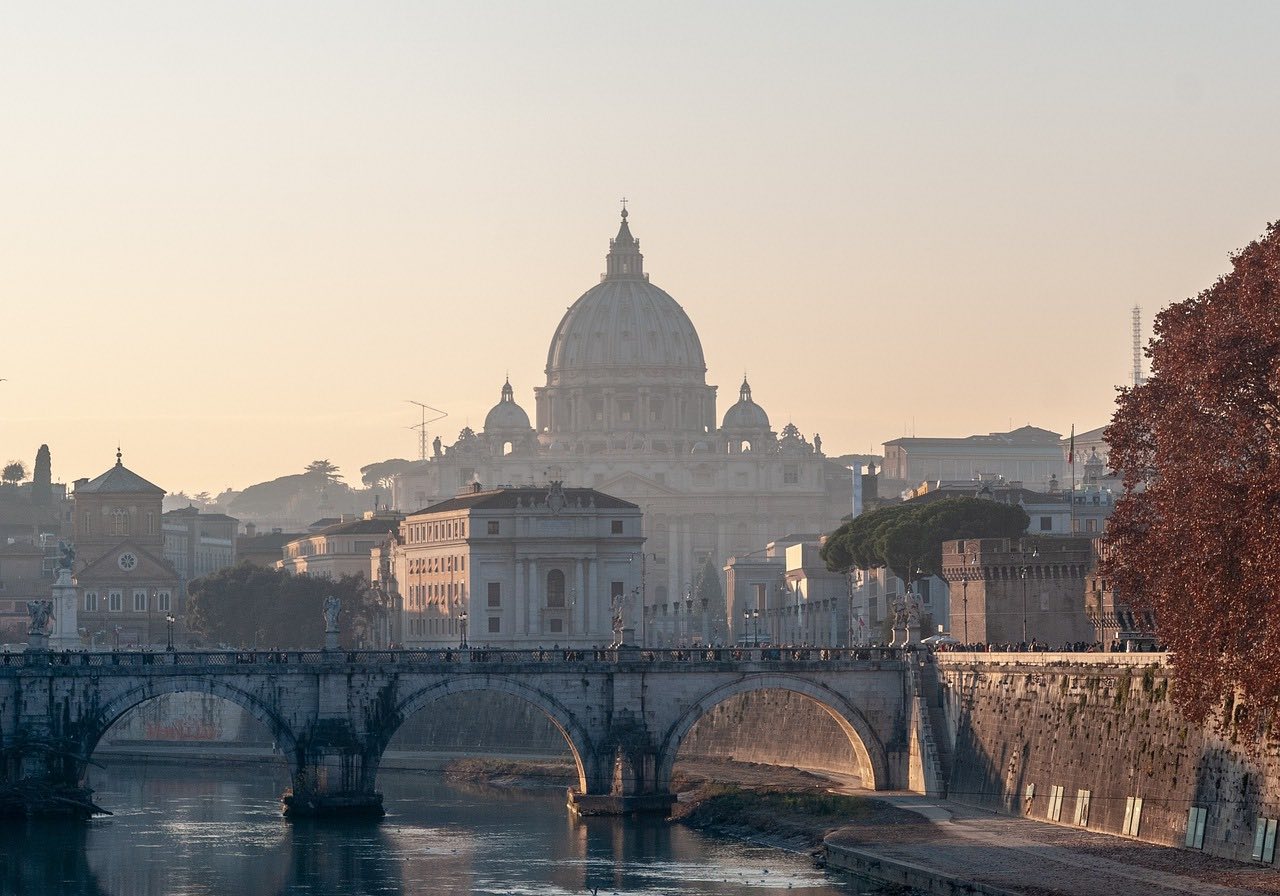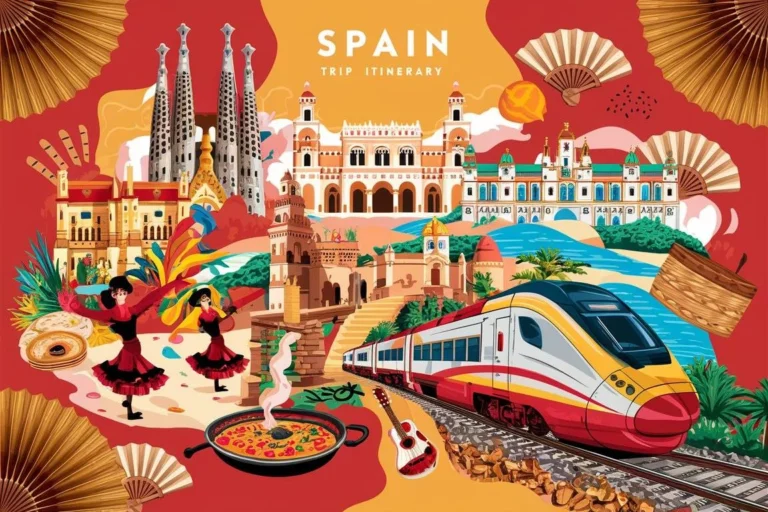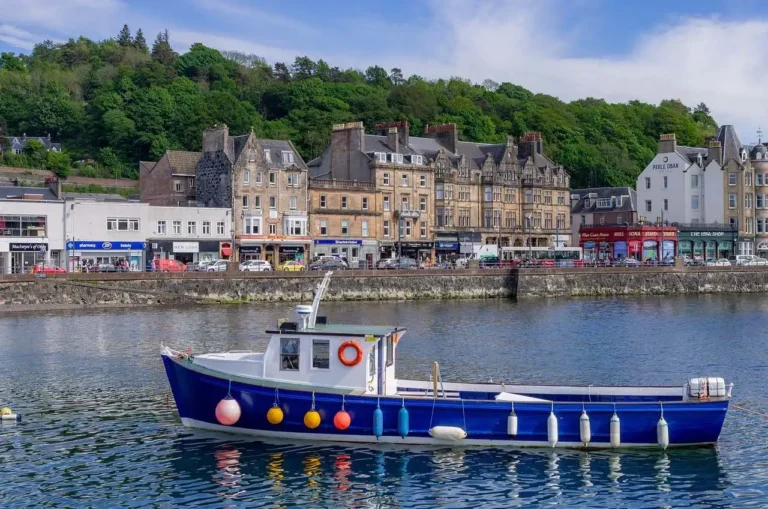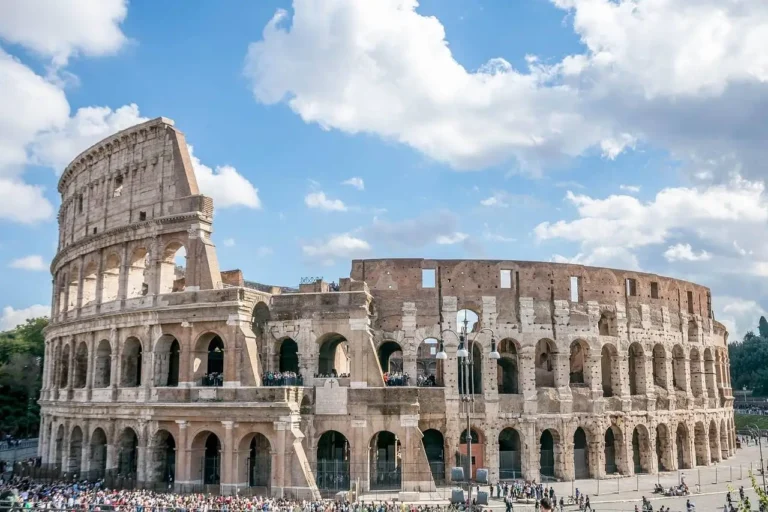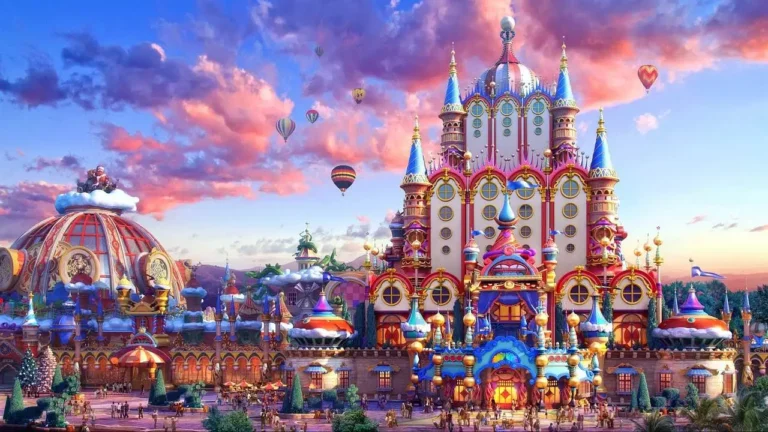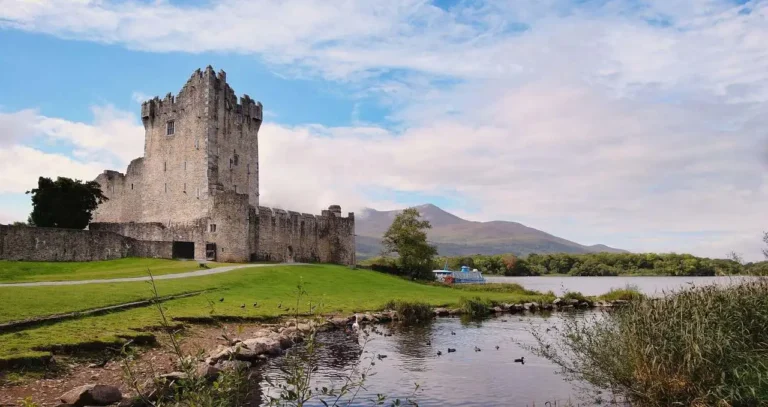10 Things to Do in Rome Italy: Best Ultimate Guide
Things to do in rome italy:
Stepping into Rome is like walking through the pages of a living history book, where ancient ruins stand alongside Renaissance masterpieces and vibrant modern life. The Eternal City offers an unparalleled concentration of artistic treasures, historical wonders, and culinary delights that can overwhelm even the most seasoned traveler. If you’re wondering about things to do in Rome, Italy, this isn’t just another generic list—it’s your practical guide to experiencing the best of Rome efficiently, authentically, and memorably.
Whether you’re planning a whirlwind visit or a longer stay, this comprehensive guide will help you navigate Rome’s must-see attractions while also revealing hidden gems that many tourists miss. We’ll cover everything from iconic landmarks to charming neighborhoods, authentic food experiences, and essential practical advice. So how many days do you need in Rome? What are the best things to do in Rome in 3 days? Let’s dive in and discover the best way to experience this magnificent city.
Table of Contents
Table of Contents: things to do in rome italy
Things to Do in Rome Italy
Colosseum
The Colosseum stands as Rome’s most iconic symbol, a testament to ancient engineering and the dramatic spectacles of the Roman Empire.
- Location: Centro Storico
- How to Get There: Metro Line B, Colosseo station
- Estimated Time Needed: 2-3 hours (including Roman Forum)
- Tickets/Booking: Essential to book online in advance through the official website. Combined ticket includes Roman Forum and Palatine Hill.
- Best Time to Visit: Early morning (8-9am) or late afternoon (4-5pm) to avoid crowds
- Cost: €18 for standard ticket
- Insider Tip: The south side typically has shorter queues even for ticket holders. Consider booking a guided tour that includes the underground areas.
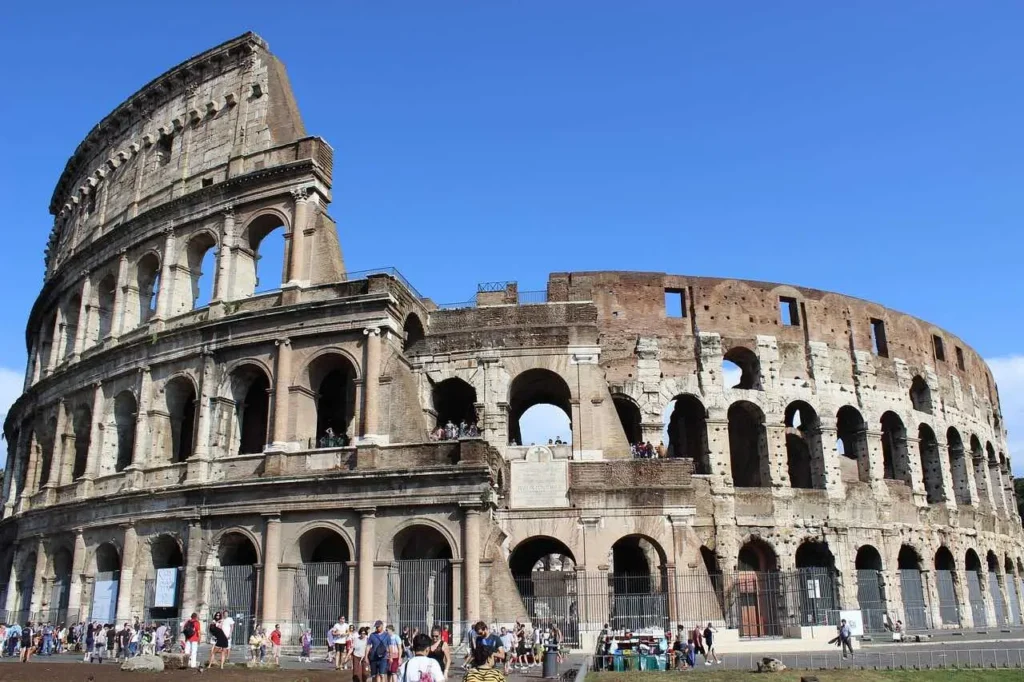
Roman Forum & Palatine Hill
The political and religious heart of ancient Rome, this sprawling archaeological complex transports you back thousands of years.
- Location: Adjacent to the Colosseum
- How to Get There: Same as Colosseum
- Estimated Time Needed: 2-3 hours
- Tickets/Booking: Same combined ticket as the Colosseum
- Best Time to Visit: Morning when it’s cooler, especially in summer
- Cost: Included with Colosseum ticket
- Insider Tip: Start at the Palatine Hill entrance on Via di San Gregorio for shorter lines and work your way down to the Forum.
Vatican City
A country within a city, Vatican City houses St. Peter’s Basilica, the Vatican Museums, and the Sistine Chapel.
St. Peter’s Basilica
- Location: Vatican City
- How to Get There: Metro Line A to Ottaviano station
- Estimated Time Needed: 1-2 hours
- Tickets/Booking: Free entry to the basilica, but paid entry for the dome climb
- Best Time to Visit: Early morning (7-8am)
- Cost: Free (€8 for dome climb)
- Insider Tip: Go very early to avoid the massive lines, or visit late afternoon when pilgrim groups have departed.
Vatican Museums & Sistine Chapel
- Location: Vatican City
- How to Get There: Metro Line A to Ottaviano or Cipro stations
- Estimated Time Needed: 3-4 hours minimum
- Tickets/Booking: Must book online through the official Vatican website
- Best Time to Visit: Early morning or late afternoon during extended summer hours
- Cost: €17-21 depending on time/season
- Insider Tip: Book the first entry time or the last entry time for fewer crowds. Friday evening visits in summer are especially pleasant.
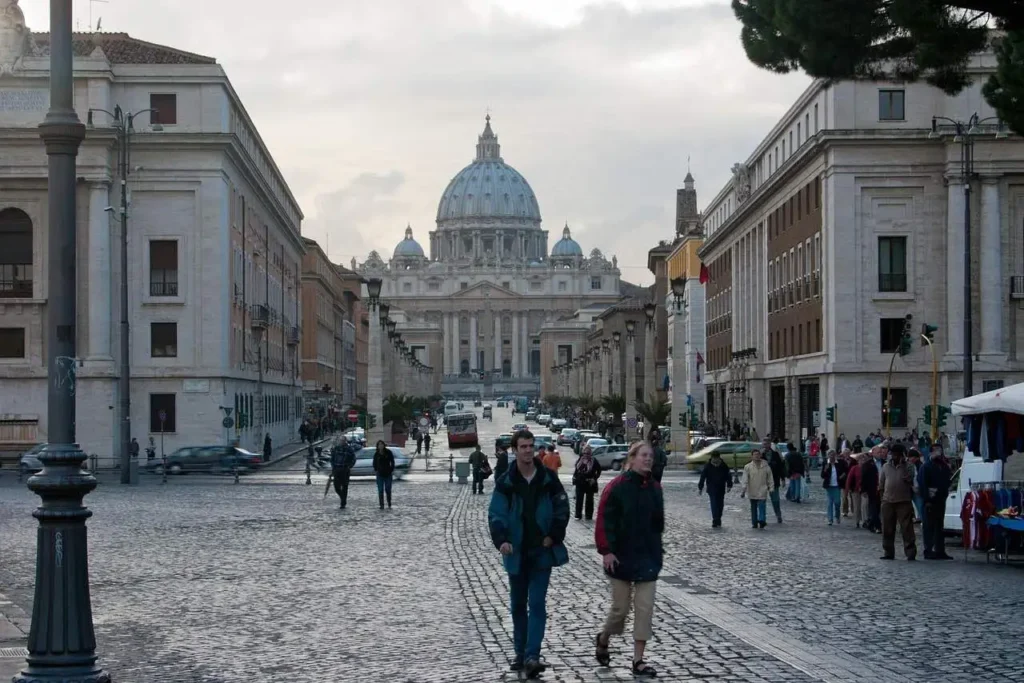
Trevi Fountain
The world’s most famous fountain where visitors toss coins to ensure their return to Rome.
- Location: Trevi district
- How to Get There: Metro Line A to Barberini station, then 10-minute walk
- Estimated Time Needed: 30 minutes
- Tickets/Booking: Free
- Best Time to Visit: Early morning (6-7am) or late night (after 11pm) to avoid crowds
- Cost: Free
- Insider Tip: Visit around sunrise for magical photos without crowds, or late at night when it’s beautifully lit.
Pantheon
This perfectly preserved ancient temple has stood for nearly 2,000 years, featuring the world’s largest unreinforced concrete dome.
- Location: Piazza della Rotonda
- How to Get There: Bus lines 30, 40, 62, 64, 81, 87
- Estimated Time Needed: 30-45 minutes
- Tickets/Booking: Free
- Best Time to Visit: Early morning or during rain when you can see the rain through the oculus
- Cost: Free
- Insider Tip: Visit on April 21 (Rome’s birthday) or Pentecost when rose petals shower through the oculus.
Spanish Steps
The elegant staircase connecting Piazza di Spagna with the church of Trinità dei Monti.
- Location: Piazza di Spagna
- How to Get There: Metro Line A to Spagna station
- Estimated Time Needed: 30 minutes
- Tickets/Booking: Free
- Best Time to Visit: Morning for photos, evening for atmosphere
- Cost: Free
- Insider Tip: Remember that sitting on the steps is now prohibited with fines. Instead, enjoy them from the piazza below.
Piazza Navona
One of Rome’s most beautiful squares, featuring three spectacular fountains and ringed by restaurants.
- Location: Centro Storico
- How to Get There: Buses 30, 70, 81, 87, 492
- Estimated Time Needed: 30-45 minutes
- Tickets/Booking: Free
- Best Time to Visit: Morning for photos, evening for atmosphere
- Cost: Free
- Insider Tip: Visit during December for the charming Christmas market, or slip into the church of Sant’Agnese in Agone to see where Bernini and Borromini’s rivalry played out.
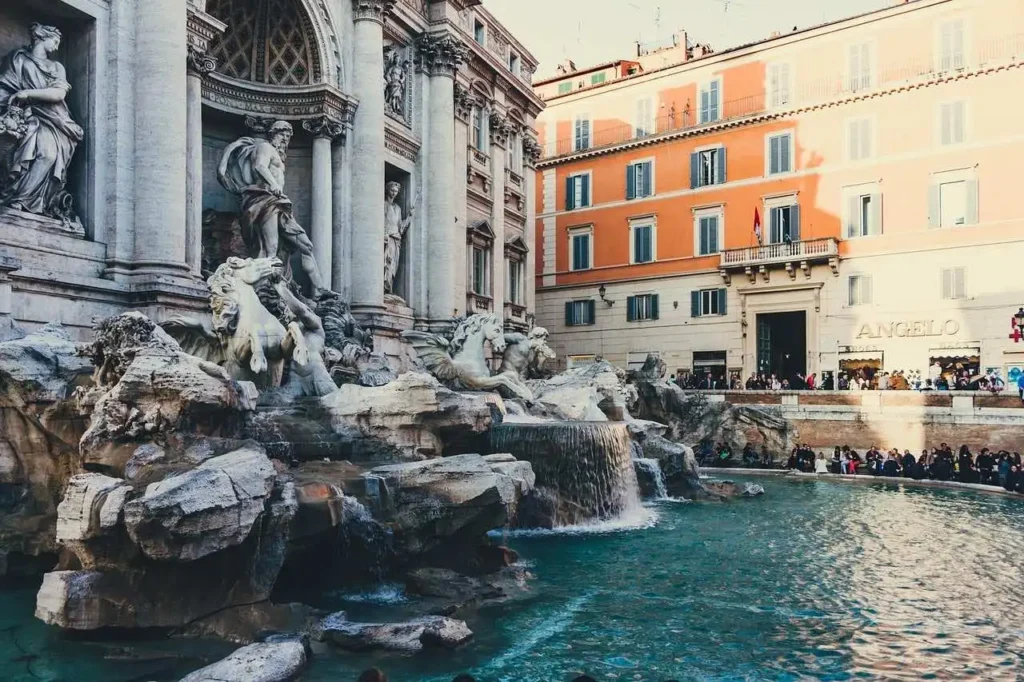
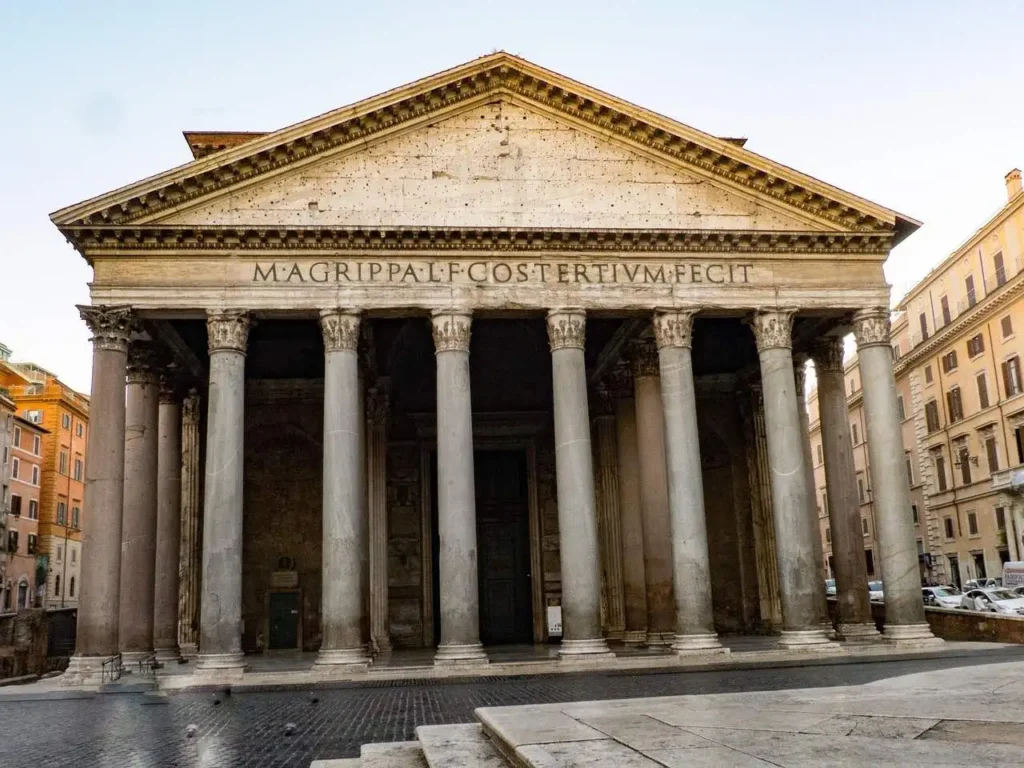
Discovering Rome’s Charming Neighborhoods
Trastevere
The bohemian soul of Rome, with narrow medieval streets, ivy-covered buildings, and a vibrant nightlife.
- Vibe/Atmosphere: Bohemian, authentic, lively
- What to Do/See:
- Piazza di Santa Maria in Trastevere
- Basilica di Santa Maria in Trastevere with its golden mosaics
- Botanical Garden (Orto Botanico)
- Villa Farnesina with Raphael frescoes
- Wander the picturesque cobblestone streets
- Why Visit: For Rome’s most authentic neighborhood feel and excellent restaurants
- Best Time to Visit: Afternoon for strolling, evening for dining and people-watching
- Food & Drink Highlights: Known for traditional trattorias, and authentic gelaterias
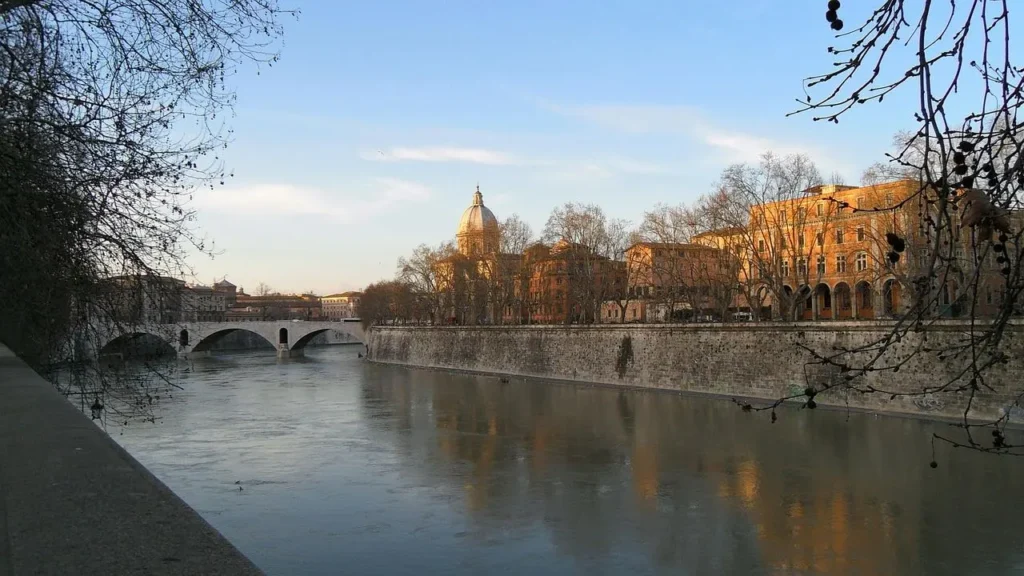
Monti
Rome’s oldest residential district, now a trendy hub for artists, designers, and foodies.
- Vibe/Atmosphere: Hip, creative, intimate
- What to Do/See:
- Piazza della Madonna dei Monti
- Via Urbana and Via del Boschetto for boutique shopping
- San Pietro in Vincoli church (home to Michelangelo’s Moses)
- Vintage and artisan markets on weekends
- Why Visit: For cool boutiques, vintage shops, and hipster cafes
- Best Time to Visit: Daytime for shopping, evening for aperitivo
- Food & Drink Highlights: cocktail spots, and innovative restaurants
Testaccio
A working-class district that offers Rome’s most authentic food scene.
- Vibe/Atmosphere: Authentic, unpretentious, foodie paradise
- What to Do/See:
- Testaccio Market
- Monte Testaccio (ancient Roman trash heap made of amphorae)
- MACRO Testaccio contemporary art museum
- Protestant Cemetery (where Keats and Shelley are buried)
- Why Visit: For the most authentic Roman cuisine away from tourist traps
- Best Time to Visit: Morning for the market, evening for dining
- Food & Drink Highlights: Traditional Roman trattorias, the famous Trapizzino, and historic food establishments
Centro Storico
The historic heart of Rome, filled with piazzas, fountains, and architectural treasures around every corner.
- Vibe/Atmosphere: Elegant, historic, bustling
- What to Do/See:
- Campo de’ Fiori market (mornings)
- Piazza Navona
- Palazzo Altemps
- Church of San Luigi dei Francesi (Caravaggio paintings)
- Via Giulia (Rome’s most beautiful street)
- Why Visit: For the highest concentration of historical sights and atmospheric streets
- Best Time to Visit: Early morning for quiet exploration, evening for the lively atmosphere
- Food & Drink Highlights: Famous coffee shops, historic pastry shops, and elegant restaurants
Indulging in Roman Food & Drink Experiences

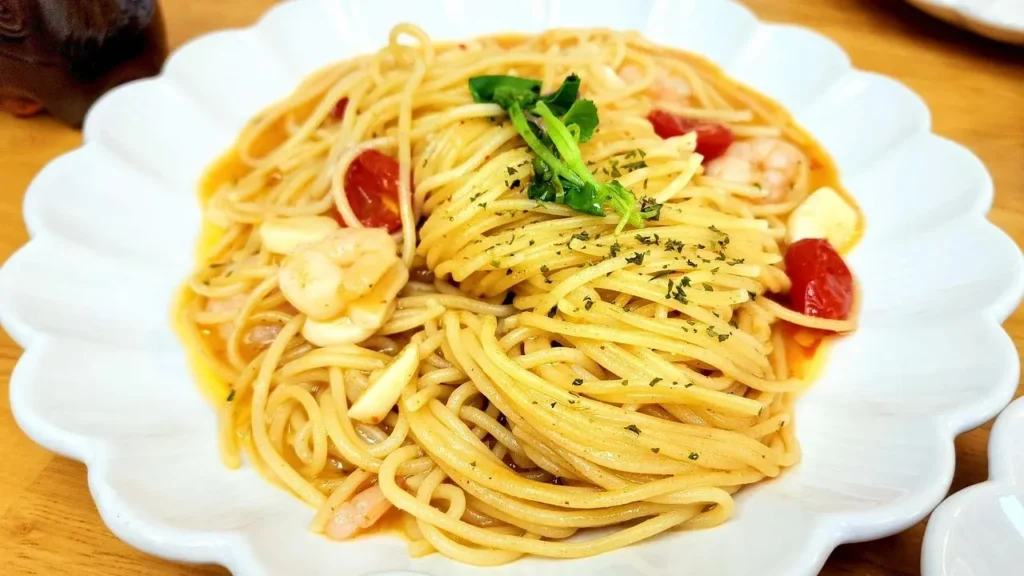
Eating Gelato
No visit to Rome is complete without sampling authentic Italian gelato.
- What it is: Artisanal Italian ice cream, denser and more flavorful than regular ice cream
- Why try it in Rome: Romans take their gelato seriously, with artisanal shops using fresh, seasonal ingredients
- How to do it right:
- Look for “gelato artigianale” (artisanal)
- Natural colors (pistachio should be dull green, not bright)
- Avoid places with mountains of fluffy gelato
- €2.50-3.50 for a small cup/cone is standard
- Recommended spots: Fatamorgana, Giolitti, Gelateria dei Gracchi, Gelateria del Teatro
Trying Roman Pasta Dishes
Rome’s four classic pasta dishes are culinary treasures not to be missed.
- What they are: Carbonara (eggs, pecorino, guanciale), Cacio e Pepe (cheese and pepper), Amatriciana (tomato, guanciale), Gricia (like carbonara without egg)
- Why try them in Rome: These dishes originated here and taste completely different from versions elsewhere
- How to do it right:
- Eat lunch between 12:30-2pm and dinner after 8pm like locals
- Avoid restaurants with menu pictures or tourist menus
- Expect to pay €9-15 for a pasta dish in a good restaurant
- Recommended spots: Roscioli, Da Cesare, Armando al Pantheon, Da Felice
Experiencing Aperitivo
The Italian tradition of pre-dinner drinks with complimentary snacks.
- What it is: A pre-dinner ritual combining drinks with light food
- Why try it in Rome: It’s a quintessential Italian social experience
- How to do it right:
- Traditional aperitivo hours are 7-9pm
- Order a Spritz, or Negroni
- Some places offer small snacks, others full buffets
- Expect to pay €8-15 for a drink with food
- Recommended spots: Bar del Fico, Salotto 42, Freni e Frizioni, Hotel Locarno
Visiting Food Markets
Experience local life and fresh ingredients at Rome’s vibrant markets.
- What they are: Daily fresh food markets where locals shop
- Why visit in Rome: Glimpse everyday Roman life and the foundation of Italian cooking
- How to do it right:
- Go early morning (7-11am) when most active
- Many markets closed Sundays and afternoons
- Try samples, buy portable foods like cheese, fruit, or porchetta
- Recommended markets: Mercato Testaccio, Campo de’ Fiori, Mercato Trionfale, Nuovo Mercato Esquilino
Drinking Espresso like a Local
Coffee culture in Rome has its own set of traditions and rules.
- What it is: Italian coffee culture is an art form with specific etiquette
- Why try it in Rome: Experience the authentic ritual at historic cafes
- How to do it right:
- Stand at the bar to pay local price (sitting costs more)
- Order simply: “un caffè” (espresso) or “un cappuccino” (only before noon)
- Drink quickly at the bar as locals do
- Expect to pay €1.10-1.50 for an espresso at the bar
- Recommended spots: Sant’Eustachio Il Caffè, Tazza d’Oro, Caffè Greco, Sciascia Caffè
Roman Pizza
Rome offers two distinct pizza styles: thin, round pizza al piatto and rectangular pizza al taglio.
- What it is: Rome’s crispy, thin-crust pizza differs from Neapolitan style
- Why try it in Rome: Experience both sit-down pizza and street-food style pizza al taglio (by the slice)
- How to do it right:
- For pizza al taglio, indicate with hands how much you want cut
- Pizza restaurants typically open only evenings
- Pizza al taglio shops open all day
- Expect to pay €7-10 for a whole pizza or €3-5 for a slice
- Recommended spots: Pizzarium, Antico Forno Roscioli, Da Remo, Li Rioni
Beyond the Obvious: Unique Things to Do
Baths of Caracalla
The massive ancient Roman bath complex showcases the scale of Roman public facilities.
- Location: Aventine Hill area
- How to Get There: Metro Line B to Circo Massimo, then 10-minute walk
- Estimated Time Needed: 1-2 hours
- Tickets/Booking: Purchase online or at entrance
- Best Time to Visit: Morning for fewer crowds
- Cost: €8-12
- Insider Tip: Opera performances are held here during summer months
Borghese Gallery & Gardens
A magnificent collection of Bernini sculptures and Caravaggio paintings in a beautiful park setting.
- Location: Northern Rome
- How to Get There: Metro Line A to Spagna, then walk or bus
- Estimated Time Needed: 3 hours (2 for gallery, 1 for gardens)
- Tickets/Booking: Must book in advance! Limited entry every two hours
- Best Time to Visit: First morning session
- Cost: €13-15
- Insider Tip: Book the earliest time slot to enjoy the park before or after
Catacombs
Ancient underground burial sites that provide unique insights into early Christianity.
- Location: Via Appia Antica (several options)
- How to Get There: Bus 118 from Circo Massimo metro
- Estimated Time Needed: 1-2 hours
- Tickets/Booking: Purchase at site or online
- Best Time to Visit: Weekday mornings
- Cost: €8-12
- Insider Tip: Catacombs of San Callisto are the largest; Catacombs of Priscilla have the oldest known image of Mary
Centrale Montemartini
Ancient Roman statues displayed in a former power plant, creating a stunning contrast.
- Location: Ostiense district
- How to Get There: Metro Line B to Garbatella
- Estimated Time Needed: 1-2 hours
- Tickets/Booking: Purchase at entrance
- Best Time to Visit: Anytime (rarely crowded)
- Cost: €7.50
- Insider Tip: One of Rome’s most photogenic and least crowded museums
Quartiere Coppedè
A hidden architectural fantasy neighborhood with whimsical buildings.
- Location: Between Via Tagliamento and Via Arno
- How to Get There: Tram 3 or 19 to Buenos Aires
- Estimated Time Needed: 1 hour
- Tickets/Booking: Free
- Best Time to Visit: Daytime for best photos
- Cost: Free
- Insider Tip: Enter through the arch at Via Tagliamento/Via Dora for the full effect
Gianicolo Hill Viewpoint
The best panoramic view of Rome from a historic hill.
- Location: Trastevere/Monteverde area
- How to Get There: Bus 115 or 870
- Estimated Time Needed: 1 hour
- Tickets/Booking: Free
- Best Time to Visit: Sunset or noon for the canon firing
- Cost: Free
- Insider Tip: A cannon fires here daily at noon, a tradition since 1847
Museums & Galleries Worth Visiting
Capitoline Museums
The world’s oldest public museums, housing ancient Roman statues and Renaissance art.
- Location: Piazza del Campidoglio
- How to Get There: Bus 63, 70, 75, 81, 87, 186, 916
- Estimated Time Needed: 2-3 hours
- Tickets/Booking: Purchase online or at entrance
- Best Time to Visit: Weekday mornings
- Cost: €15
- Insider Tip: The view from the Tabularium gallery overlooking the Forum is spectacular
Galleria Doria Pamphilj
An opulent private palace housing masterpieces by Caravaggio, Raphael, and Velázquez.
- Location: Via del Corso
- How to Get There: Bus 64, 40, 46, 62, 916
- Estimated Time Needed: 1-2 hours
- Tickets/Booking: Purchase at entrance
- Best Time to Visit: Anytime (rarely crowded)
- Cost: €12
- Insider Tip: The audio guide is narrated by a family member of the palace owners
Palazzo Barberini
A magnificent baroque palace housing Italy’s national art collection.
- Location: Via delle Quattro Fontane
- How to Get There: Metro Line A to Barberini
- Estimated Time Needed: 2 hours
- Tickets/Booking: Purchase at entrance
- Best Time to Visit: Weekday mornings
- Cost: €12
- Insider Tip: Don’t miss the ceiling fresco “Triumph of Divine Providence” by Pietro da Cortona
Best Parks & Views in Rome
Villa Borghese
Rome’s central park offers museums, boat rentals, and peaceful gardens.
- Location: North of Spanish Steps
- How to Get There: Metro Line A to Flaminio or Spagna
- Estimated Time Needed: 2-3 hours
- Tickets/Booking: Free for park, tickets needed for museums
- Best Time to Visit: Morning or late afternoon
- Cost: Free
- Insider Tip: Rent a rowboat on the small lake for romantic views
Parco degli Acquedotti
Ancient Roman aqueducts run through this atmospheric park.
- Location: Southeast Rome
- How to Get There: Metro Line A to Giulio Agricola
- Estimated Time Needed: 1-2 hours
- Tickets/Booking: Free
- Best Time to Visit: Late afternoon for golden light
- Cost: Free
- Insider Tip: Featured in “La Grande Bellezza” and other films
Aventine Hill Keyhole
Peek through the famous keyhole for a perfectly framed view of St. Peter’s Dome.
- Location: Piazza dei Cavalieri di Malta
- How to Get There: Bus 75, 81, 118, 160
- Estimated Time Needed: 30 minutes
- Tickets/Booking: Free
- Best Time to Visit: Morning for shorter lines
- Cost: Free
- Insider Tip: Visit the adjacent Orange Garden (Giardino degli Aranci) for more great views
Practical Planning: Tickets, Transport & More
Getting Around Rome
Rome offers multiple transportation options:
- Metro: Limited but fastest for longer distances (Lines A, B, C)
- Single ticket (BIT): €1.50 (valid for 100 minutes on bus/metro)
- 24-hour pass: €7
- 48-hour pass: €12.50
- 72-hour pass: €18
- Buses: Extensive network but can be crowded
- Trams: Less frequent but useful for certain areas
- Walking: Best for centro storico (historic center)
- Taxis: Use official white taxis from stands or apps
Rome Passes
Several options depending on your needs:
- Roma Pass (2-3 days, €32-52)
- Free admission to 1-2 museums/sites
- Discounts on other attractions
- Unlimited public transportation
- Best for: archaeological site visitors
- Omnia Card (3 days, €129)
- Includes Vatican sites plus Roma Pass benefits
- Best for: visitors focusing on both Vatican and ancient sites
Best Time to Visit Rome
- Spring (April-May): Ideal weather, moderate crowds, vibrant atmosphere
- Summer (June-August): Hot, crowded, many Romans leave in August
- Fall (September-October): Pleasant weather, fewer crowds than summer
- Winter (November-March): Fewest tourists, occasional rain, unique Christmas atmosphere
How Many Days Do You Need?
For an enjoyable experience in Rome:
- 3 days: Minimum to see major highlights
- 4-5 days: Comfortable pace for main sights plus neighborhoods
- 7+ days: In-depth exploration including day trips
Safety Tips
Rome is generally safe but be aware of:
- Pickpockets at tourist sites and on public transport
- Unofficial taxi drivers at stations/airports
- “Bracelet trick” scammers near Spanish Steps
- Always validate tickets on buses/metro to avoid fines
Basic Italian Phrases
A few phrases will enhance your experience:
- “Buongiorno” – Good morning/day
- “Grazie” – Thank you
- “Per favore” – Please
- “Parla inglese?” – Do you speak English?
- “Il conto, per favore” – The bill, please
Suggested Rome Itineraries
Rome in 1 Day (Fast Pace)
A whirlwind tour hitting the absolute must-sees:
- Morning: Colosseum and Roman Forum (4 hours)
- Afternoon:
- Lunch near Pantheon
- Visit Pantheon (30 min)
- Trevi Fountain (20 min)
- Spanish Steps (20 min)
- Evening:
- Dinner in Centro Storico
- Evening walk to Piazza Navona
Rome in 3 Days (Highlights)
The perfect balance of major sites and Roman culture:
Day 1: Ancient Rome
- Morning: Colosseum, Roman Forum, Palatine Hill
- Lunch in Monti neighborhood
- Afternoon: Capitoline Museums
- Evening: Dinner in Testaccio for authentic Roman cuisine
Day 2: Vatican and Centro Storico
- Morning: Vatican Museums, Sistine Chapel, St. Peter’s Basilica
- Lunch near Vatican
- Afternoon: Castel Sant’Angelo, Pantheon, Piazza Navona
- Evening: Dinner and passeggiata in Centro Storico
Day 3: Baroque Rome and Neighborhoods
- Morning: Borghese Gallery (book in advance!)
- Lunch in Trastevere
- Afternoon: Explore Trastevere, Trevi Fountain, Spanish Steps
- Evening: Aperitivo and dinner in Trastevere
Rome in 5 Days (Deeper Dive)
Time to explore beyond the obvious:
Days 1-3: Follow the 3-day itinerary above
Day 4: Off the Beaten Path
- Morning: Appian Way and Catacombs
- Lunch at a local spot along Via Appia
- Afternoon: Baths of Caracalla, Circus Maximus
- Evening: Food tour in Testaccio or Prati
Day 5: Art and Views
- Morning: Palazzo Barberini or Galleria Doria Pamphilj
- Lunch in Monti
- Afternoon: Aventine Hill, Orange Garden, Keyhole View
- Evening: Gianicolo Hill for sunset views, dinner in Trastevere
FAQs about things to do in rome italy
-
How many days should I spend in Rome?
Ideally, 3-4 days minimum to see the major highlights without rushing. Five days allows for a more relaxed pace and deeper exploration of neighborhoods.
-
Is Rome walkable?
The historic center is very walkable and best explored on foot. For longer distances or trips to outlying attractions, use public transportation.
-
What’s the best way to get around Rome?
A combination of walking and public transportation. The metro is fastest for longer distances, while buses cover more areas but can be crowded.
-
Should I buy tickets in advance for attractions?
Absolutely yes for the Vatican Museums, Colosseum, and Borghese Gallery. These often sell out days or weeks in advance, especially in high season.
-
What are the must-try foods in Rome?
Don’t miss the four classic Roman pasta dishes: carbonara, cacio e pepe, amatriciana, and gricia. Also try supplì (fried rice balls), pizza al taglio, and authentic gelato.
-
Is the tap water safe to drink?
Yes! Rome’s water is excellent and safe. You can also refill bottles at the many “nasoni” (drinking fountains) throughout the city.
-
What’s the best time of year to visit Rome?
Spring (April-May) and fall (September-October) offer the best balance of pleasant weather and manageable crowds.
-
Are there free things to do in Rome?
Many! Churches like St. Peter’s Basilica, the Pantheon, and numerous others with priceless artwork are free. Also free: Trevi Fountain, Spanish Steps, piazzas, and many parks and viewpoints.
Rome is a city where ancient history and vibrant modern life intertwine around every corner. With its unparalleled concentration of art, architecture, and culinary traditions, the Eternal City rewards both first-time visitors and those returning for deeper exploration. This guide has outlined the essential things to do in Rome, Italy, but the city’s greatest pleasure lies in discovery—wandering down a side street to find a hidden piazza, stumbling upon a neighborhood restaurant serving perfect pasta, or happening upon an ancient column built into a medieval building.
Remember that Rome wasn’t built in a day, and it certainly can’t be fully experienced in one either. Whether you have 3 days in Rome or longer, focus on balancing the major sights with time to simply soak in the atmosphere. By planning your visit with this guide, you’ll maximize your time and create lasting memories of this extraordinary city.

